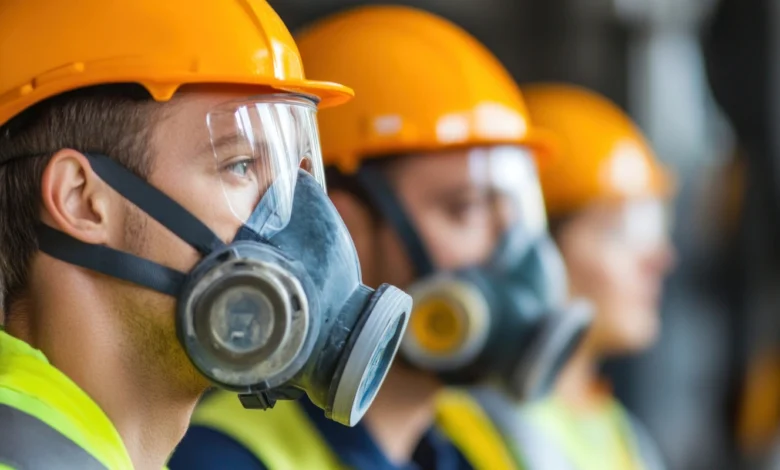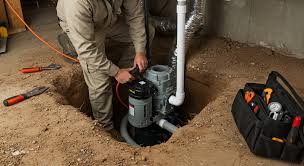Mask Fit Testing and ISO 14001: Bridging Workplace Safety and Environmental Sustainability in Australia

Within the diversity of Australia’s industrial landscape, the issue of worker safety and environmental sustainability often meets at unlikely crossroads. The mask fit test, one of the cornerstones of workplace respiratory safety, has a surprising synergy with the principles of ISO 14001 environmental management that few organizations have explored. Together, they present a strong opportunity to protect workers while taking into consideration wider goals of sustainability.
This blog examines how Australian businesses can integrate mask fit testing with the guidance of an ISO 14001 consultant, creating workplaces that prioritize health, safety, and environmental responsibility.
The Importance of Mask Fit Testing in High-Risk Industries
From construction and mining to manufacturing, Australian industries expose workers to airborne hazards such as silica dust, chemical vapors, and asbestos fibers. Proper respiratory protection is critical and, therefore, mask fit testing ensures that the protective equipment applied will be effective for each individual.
Mask fit testing is not merely about compliance—it’s about reducing the risk of respiratory illnesses that can have lifelong impacts on workers. With silica-related diseases on the rise in Australia, particularly in sectors like engineered stone fabrication, the emphasis on respiratory safety has never been greater.
ISO 14001: A Framework for Sustainability
ISO 14001 provides a structured framework for environmental management, helping organizations minimize their environmental impact while meeting regulatory requirements. While it primarily focuses on sustainability, its principles can significantly influence workplace practices, including those related to health and safety.
An ISO 14001 consultant helps organizations identify and address environmental risks, implement efficient waste management systems, and optimize resource usage. When combined with mask fit testing, this approach enhances both worker safety and environmental outcomes.
Integrating Mask Fit Testing and ISO 14001 Principles
The intersection of mask fit testing and ISO 14001 principles creates a holistic approach to workplace safety and sustainability. Here’s how these elements complement each other:
1. Reducing Environmental Impact of PPE Usage
Mask fit testing ensures workers are using the correct respiratory protection, which can extend the life of personal protective equipment (PPE). By reducing waste from improperly discarded or ineffective masks, organizations align their safety practices with ISO 14001’s goals of waste minimization.
2. Air Quality Monitoring
An ISO 14001 consultant often recommends air quality assessments as part of environmental management strategies. These assessments can also inform mask fit testing programs, ensuring that the chosen PPE effectively protects workers from identified hazards.
3. Sustainable Procurement
ISO 14001 emphasizes responsible procurement practices. Organizations can source environmentally friendly respiratory masks, such as those made from biodegradable materials, to reduce their carbon footprint while maintaining safety standards.
4. Integration into Environmental Objectives
Mask fit testing can be integrated into the overall environmental management plan under ISO 14001. For instance, dust mitigation efforts reduce emissions but also minimize the need for heavy reliance on respiratory protection, which supports both safety and sustainability goals.
Australian-Specific Challenges and Opportunities
The integration of mask fit testing with ISO 14001 is particularly relevant in Australia due to its unique regulatory and environmental context:
Stringent Safety Regulations: Australian laws, including those from Safe Work Australia, require robust respiratory protection programs in high-risk industries. Combining these programs with environmental strategies ensures comprehensive compliance.
Climate Considerations: Rising temperatures and arid conditions exacerbate dust-related hazards, making effective respiratory protection critical. ISO 14001 strategies for reducing workplace dust can complement mask fit testing efforts.
Cultural and Geographic Diversity: Australia’s diverse workforce and remote operations require tailored solutions for both safety and sustainability, which can be addressed through integrated approaches.
Benefits of a Combined Approach
By aligning mask fit testing with ISO 14001 principles, Australian organizations can achieve a range of benefits:
Improved Worker Health and Morale
Effective respiratory protection ensures workers feel valued and protected, boosting morale and productivity.
Regulatory Confidence
Demonstrating alignment with both safety and environmental standards strengthens relationships with regulators and stakeholders.
Operational Efficiency
Reducing waste, optimizing PPE usage, and streamlining air quality management result in cost savings and operational improvements.
Enhanced Reputation
Commitment to both safety and sustainability enhances an organization’s reputation as a responsible employer and corporate citizen.
The Future of Safety and Sustainability in Australia
Emerging trends in technology and regulation are set to further align workplace safety with environmental sustainability:
IoT-Enabled Monitoring: Devices that monitor air quality in real time can inform both mask fit testing and environmental management strategies.
Circular Economy in PPE: Recycling programs for used masks can reduce environmental impact while meeting ISO 14001 objectives.
Integration of ESG Goals: Environmental, social, and governance (ESG) reporting is increasingly integrating workplace safety metrics. This shows the need for combined approaches.
Conclusion
Mask fit testing and ISO 14001 principles mark a new frontier in workplace safety and environmental sustainability. For Australian businesses, this integrated approach ensures compliance and drives innovation, operational efficiency, and stakeholder trust.
By engaging an ISO 14001 consultant and prioritizing respiratory protection, organizations can create environments where safety and sustainability go hand in hand. The result is a future-ready workplace that protects both its people and the planet, setting a benchmark for others to follow in Australia’s industrial landscape.




